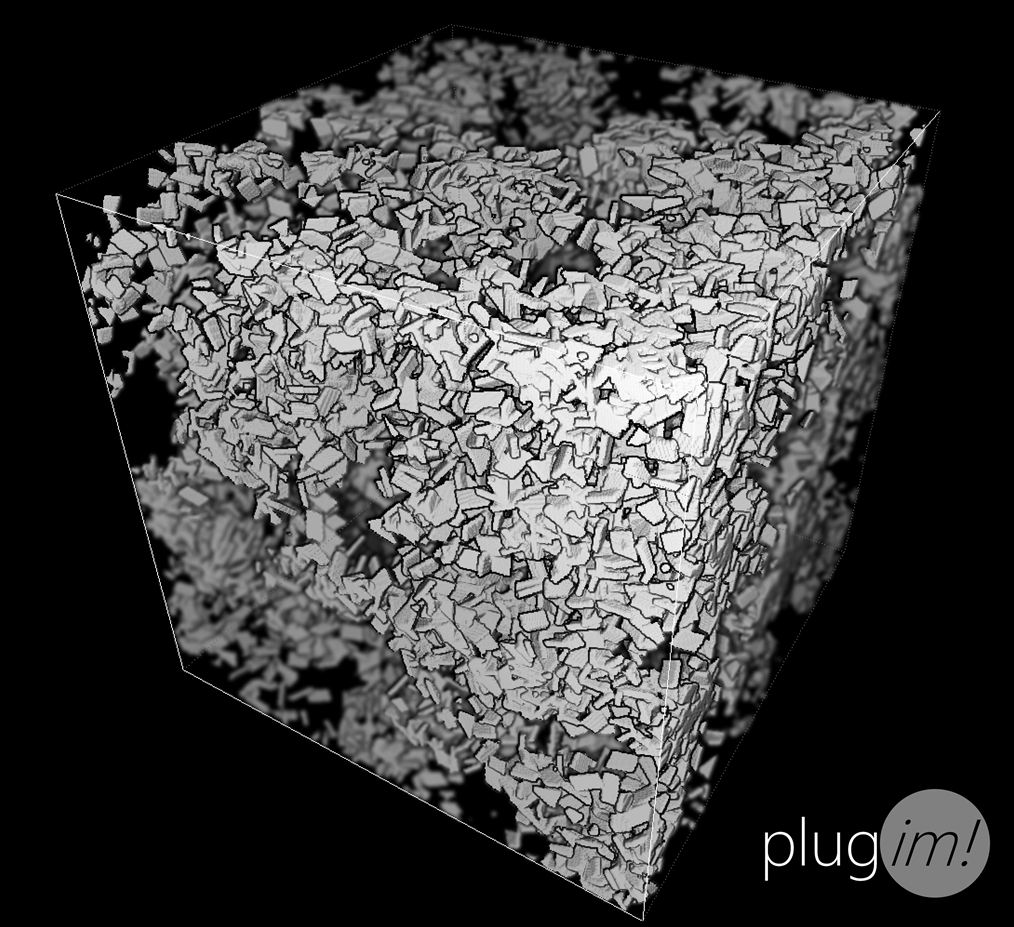My HDR research was aimed at optimizing catalyst performance using image processing, automating the analyses and improving the quality of the information extracted from data. The knowledge and tools stemming from my work concern chromatography and X-ray diffraction (1D) signals, electron microscopy (2D) images and electron tomography (3D) analyses.
The latter technique makes it possible to extract information on a nanometric scale, the characteristic dimension of mesoporosity in catalyst supports. If provides invaluable information concerning the efficacy and selectivity of catalytic materials via the study of the diameter and connectivity of these pores. These data are useful both for controlling catalyst formulation procedures and improving the understanding of transport phenomena on a mesoporous scale.
Random morphological models (figure) made it possible to reproduce virtual microstructures (numerical 3D) close to those observed and to incorporate slight
geometric modifications (grain size, porosity, etc.) in order to study the impact of these modifications on the textural and usage (diffusion or mechanical) properties. Thanks to this research conducted in partnership with academiaa, the geometric and topological characterization of porous networks has improved via new numerical descriptors of microstructures(1).

of an alumina microstructure made up of nanoplates.
Available in the plug im! platform (figure), the application of these descriptors used for aluminas(2) has been extended to the field of neurosciences for living cells, in partnership with Laval University’s CERVO brain research laboratory in Quebec.
a - Notably the Hubert Curien laboratory at Jean Monnet University and the Mathematical Morphology Center at Mines ParisTech engineering school
(1) J. Chaniot, M. Moreaud, L. Sorbier, T. Fournel, J. M. Becker, Image Analysis and Stereology 38 (1), p. 25-41 (2019).
https://doi.org/10.5566/ias.2039
(2) A. T. F. Batista, W. Baaziz, A. L. Taleb, J. Chaniot, M. Moreaud, C. Legens, A. Aguilar-Tapia, O. Proux, J. L. Hazemann, F. Diehl, C. Chizallet, A. S. Gay, O. Ersen, P. Raybaud. ACS Catal. 10, p. 4193-4204 (2020).
https://doi.org/10.1021/acscatal.0c00042
Scientific contact: Maxime Moreaud





